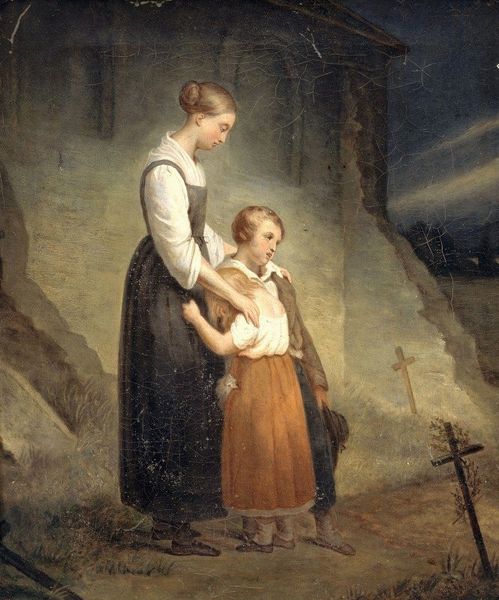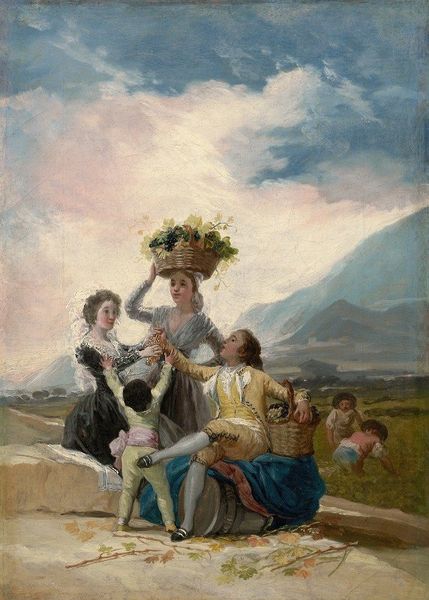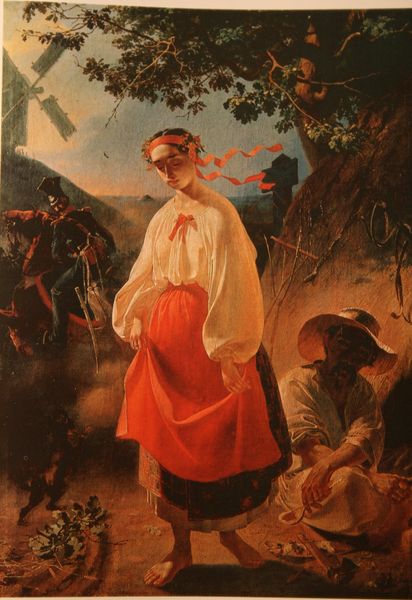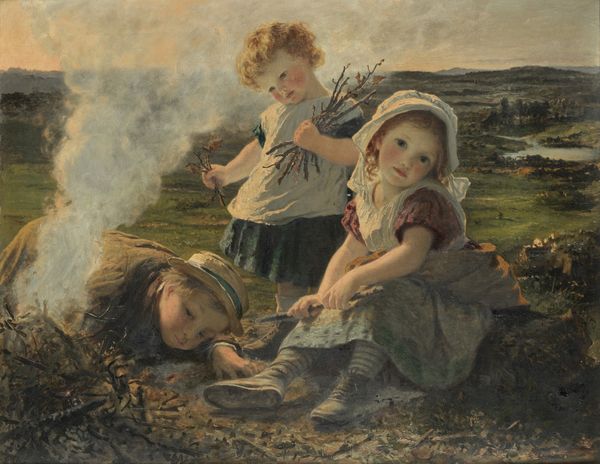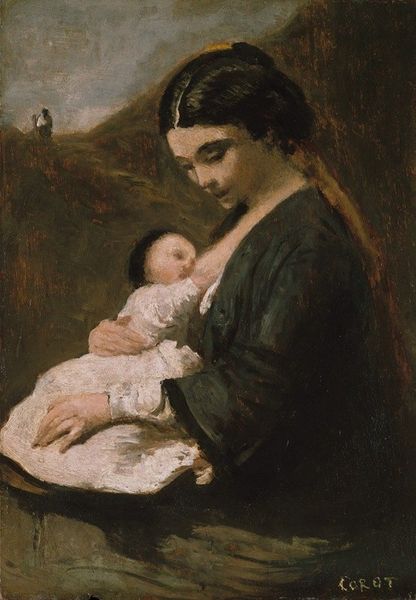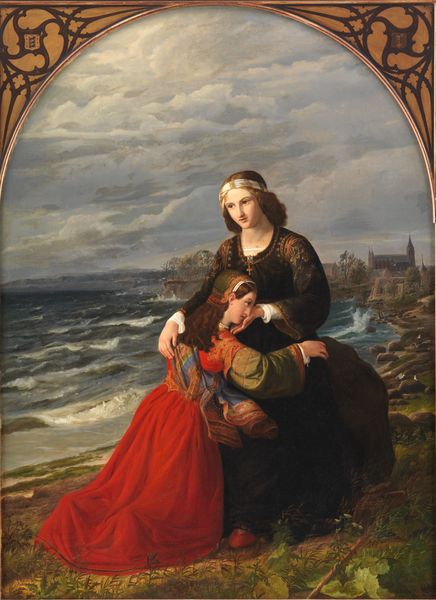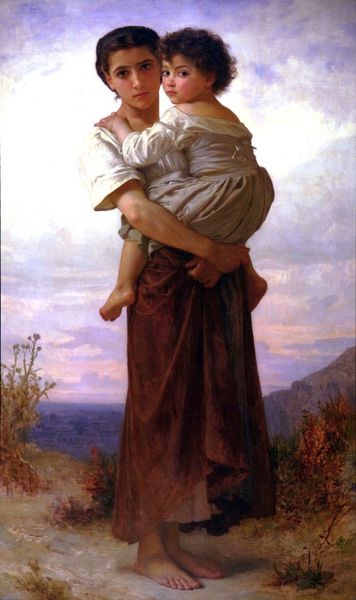
Copyright: Public domain
Gerolamo Induno painted this scene of a hurdy-gurdy player, probably in Italy, some time in the mid-19th century. The image presents us with a girl, perhaps no more than a teenager, who carries her instrument on her back. Another child looks on, perhaps waiting to collect coins from passers-by. We can appreciate Induno's sensitivity in representing these itinerant musicians, but it’s important to remember that this is a representation of the social margins made for a paying audience. The art market in 19th century Europe thrived on images of everyday life, especially when those images carried the picturesque connotations of rural life. The art institutions of the time - the academies and salons - were invested in the idea of the artist as someone who could elevate these scenes, making them both edifying and saleable. To understand the image more fully, we might want to research the musical culture of 19th century Italy. What was the place of itinerant musicians? And how were they perceived by the middle classes who purchased paintings such as this?
Comments
No comments
Be the first to comment and join the conversation on the ultimate creative platform.

